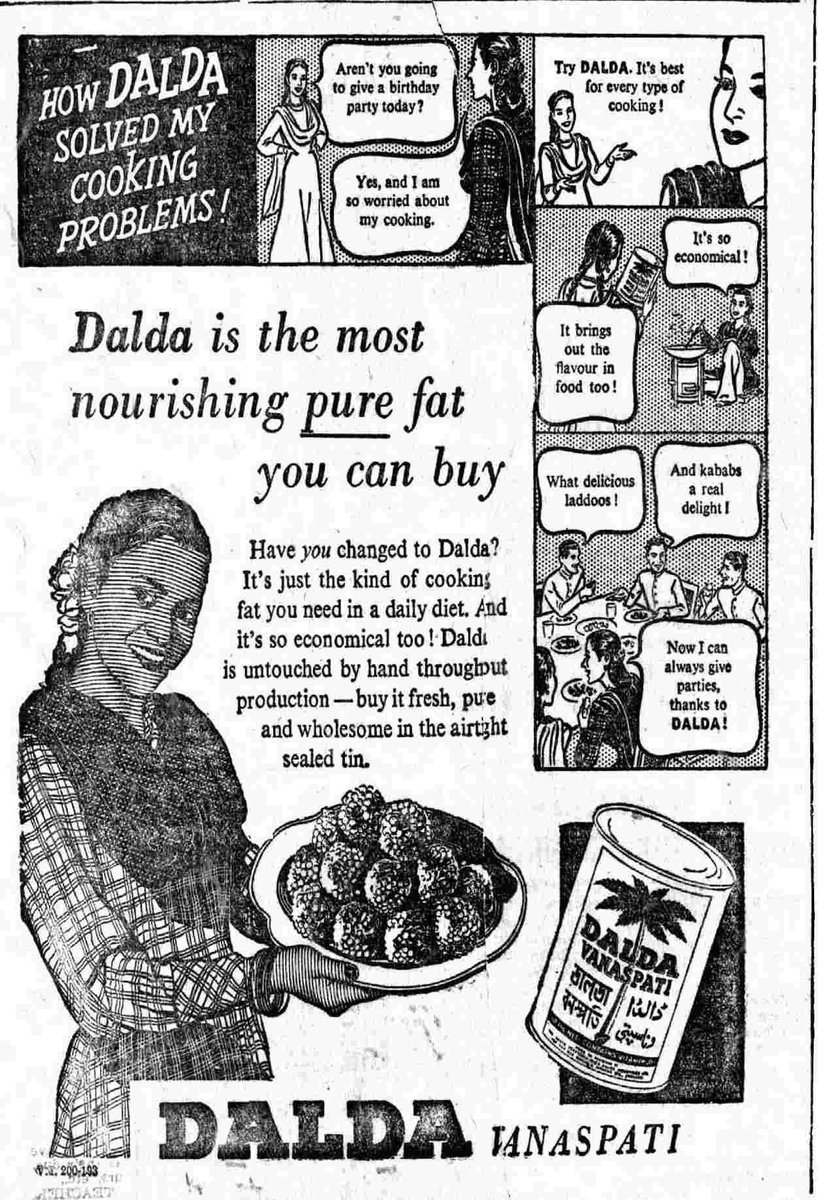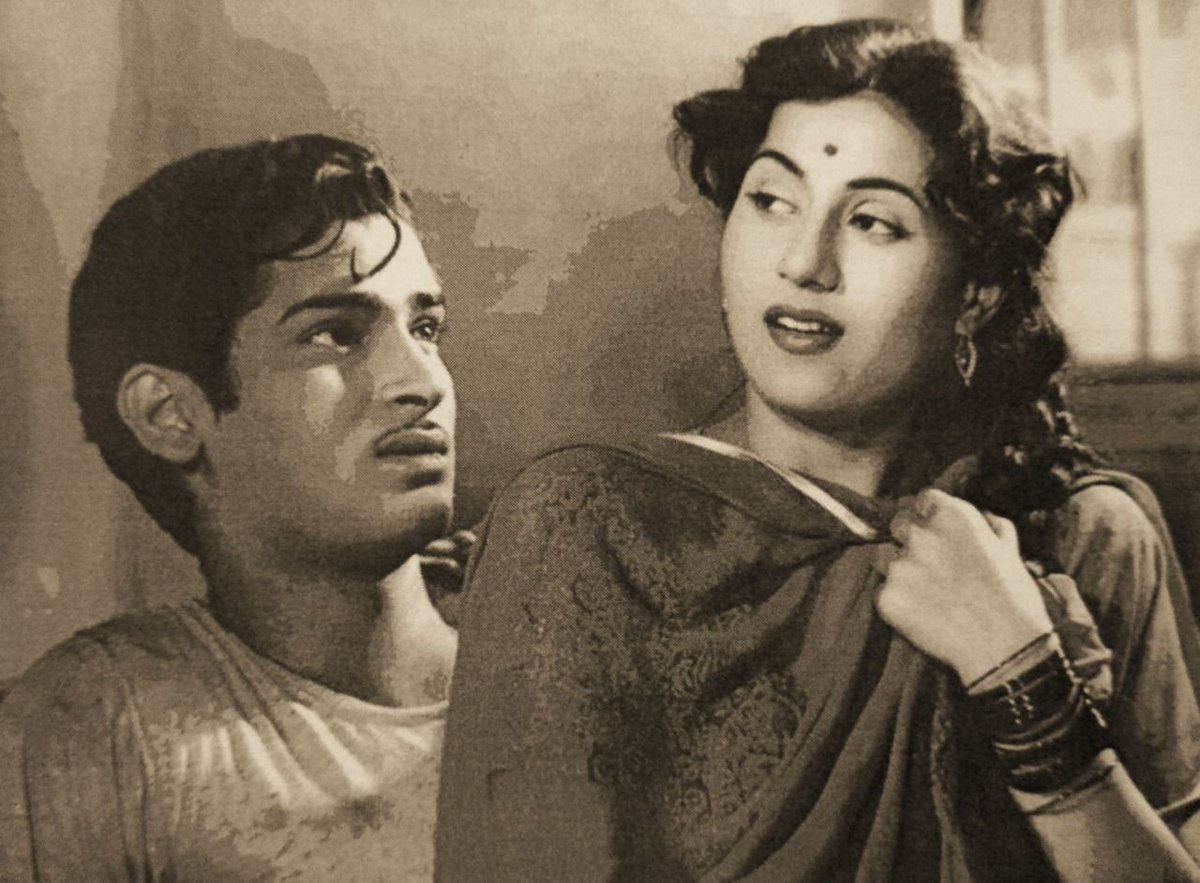
India’s first multi-media ad campaign rolled out in 1939 and it was totally offline. It promoted a vanaspati ghee brand once familiar to every Indian kitchen – Dalda. It was executed by Lintas for the Lever Brothers (later Hindustan Unilever), who then owned the brand.
1/6
1/6

The Dalda ad campaign involved sending a round, tin-shaped van to roam the streets; screening a short film in cinemas; roadside stalls where people could sample the product; roadside stalls selling tasty snacks cooked in Dalda; print ads; and leaflets for distribution.
2/6
2/6

#DidYouKnow that the Dalda ad campaign of the ‘30s & ‘40s roped in wandering storytellers in India’s villages, where they talked about the vanaspati brand and its benefits? Talk about smart product placement!
3/6
#MakingofModernIndia
3/6
#MakingofModernIndia

Vanaspati (hydrogenated vegetable cooking oil/fat, usually made from palm oil) was aggressively promoted as a cheaper but equally tasty alternative to ghee (clarified butter). It was a new concept and, thanks to the innovative marketing campaign, it caught on quickly.
4/6
4/6

#DidYouKnow that the Dutch introduced vanaspati to India in the ’30s and called it ‘Dada’ after the company that imported it? The Lever Brothers bought the brand and started producing it locally. They added an ‘L’ (for Lever) to the name – and thus ‘Dalda’ was born in 1937.
5/6
5/6
The Dalda brand is not owned by Hindustan Unilever any longer – it was bought by Bunge India Pvt Ltd in 2003 – but the Lever brothers have left an enduring ‘L’ for ‘Legacy’!
6/6
6/6
• • •
Missing some Tweet in this thread? You can try to
force a refresh















